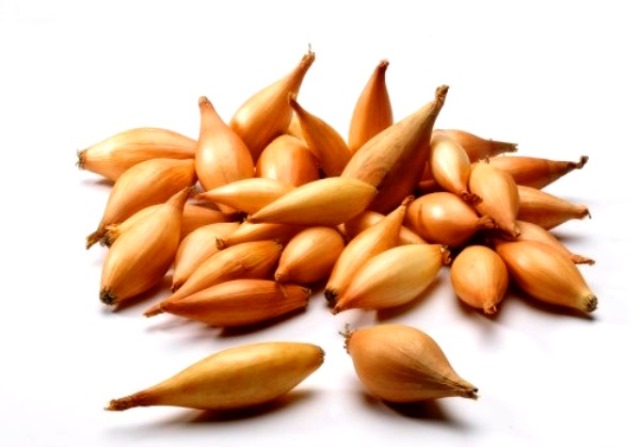This garden plant is considered the most popular among gardeners. There are so many varieties and varieties of onion that you can easily get lost in such abundance. German breeders offered for breeding onion variety Bamberger, which is characterized by slightly spicy taste and medium-sized onions. We will talk about its description and characteristics below.
Table of contents
Description and characteristics of onion variety Bamberger
This is the kind of new generation.used for spring planting for greenery and turnips. Yellow flakes, the inside is fleshy, white.
The medium early variety forms a small amount of green arrows, it has good taste characteristics. Bulbs of rounded forms, weigh from seventy to eighty grams, are perfectly adapted for long storage. Maximum yield can be achieved if you plant onions sevke.
The plant successfully confronts major diseases, but may be affected by onion fly larvae.
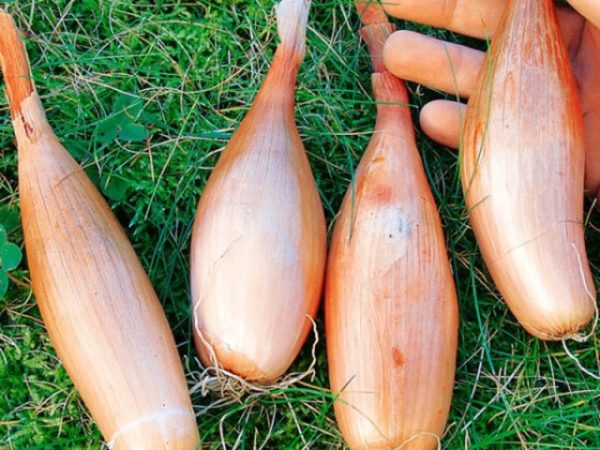
Onion Bamberger shows demanding fertility of the soil composition. In this regard, for its cultivation it is better to use areas with sandy loam and light loam. It is also important when growing and the acidity of the land, which should be neutral. Arrangement of onion beds in damp lowlands is not recommended. This can affect the rate of aging and the appearance of fungal growths.
Advantages and disadvantages
The term of growing onions should not be attributed to a stable characteristic. It is described both as a medium early and medium late one. But it can be attributed to the first group, if the landing is done for a feather pasture. But the growth of bulbs and their full maturation can occur in different ways, based on the growing regions.
Onion sevok has an elongated shape that distinguishes it from other varieties. This feature is also preserved in the grown onion, which is convenient to clean and chop. It is worth noting that the neck of the bulbs almost do not rot.
A special advantage - taste differences. Onions are considered mild in taste, used for salads. There are also shades of burning sensation in it, but they only give an extra flavor. The bulbs are soft, crispy and very juicy, perfectly cleaned from the husks covering them.
Special mention should be made of excellent preservation and keeping quality. Onion Bamberger can lie down to the next harvest.
The variety has three types of resistance - to the arrows, the formation of fungal diseases, the defeat of parasites.
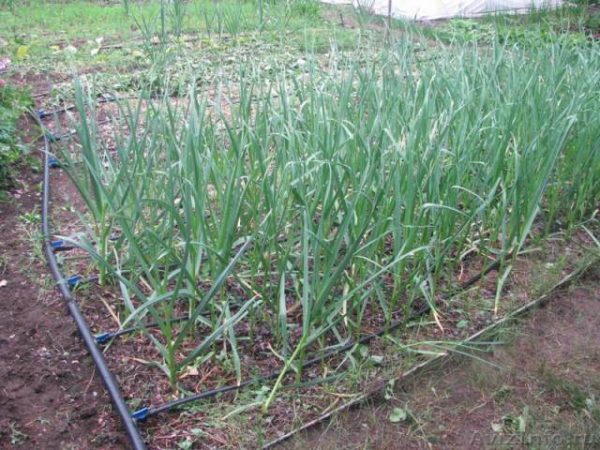
But the planting material from Chuvashia grows best in the Volga regions. It costs a bit cheaper, but in cold climatic conditions it is not capable of producing excellent yields.
Landing requirements
Bamberger does not belong to capricious cultures, grow it according to the standard rules of cultivation of onions. But still there are some peculiarities, which should not be neglected.
In addition, early planting can further protect plants from harmful parasites and diseases.
On the eve of disembarkation, planting material is warming up for several days in order to ensure amity and speed of shoots, to keep it from shooting.
Sevok from Holland should not be heated, but it is necessary to soak it in a humate solution.
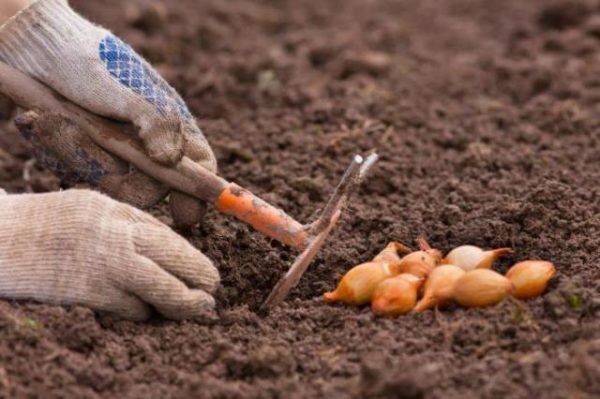
Choosing a bed for onions, you should consider the crop rotation, light, airing. The soil should be light. It is recommended to use organics as fertilizer components so that the delicate root system does not suffer from an excess of mineral salts.The bed is best to fill with rotten organic matter, adding a small amount of wood ash.
Onions are planted with seeds and sevke. In the first case, the material prepared for planting is planted in late April. Technically it looks like this:
- grooves are prepared, the depth of which ranges from five to seven centimeters, the distance between them is fifteen. If the soil composition is too dry, it must be watered;
- the bottom of the furrows evenly wakes up with swollen manure and simple superphosphates (5 to 1);
- sowing is carried out with a depth of two to three centimeters. Consumption of seed stock - up to three grams per square meter;
- the furrows are covered with soil and compacted.
Planting sevke slightly different. The earth should warm up to fourteen degrees. Works on planting are carried out in the following sequence:
- arrange furrows with an interval of twenty centimeters, the depth of which reaches five;
- about fifty grams of rotted manure is applied to one square, this is done on the day of disembarkation;
- landing depth is four centimeters. The intervals between the bulbs should be ten centimeters;
- the furrows are sprinkled, slightly compacted.
Care rules
After landing, the beds should be mulched. This measure will allow an artificial way to organize the conditions for long-term wetting of the soil composition, if there is a dry period or it is not possible to organize regular watering.
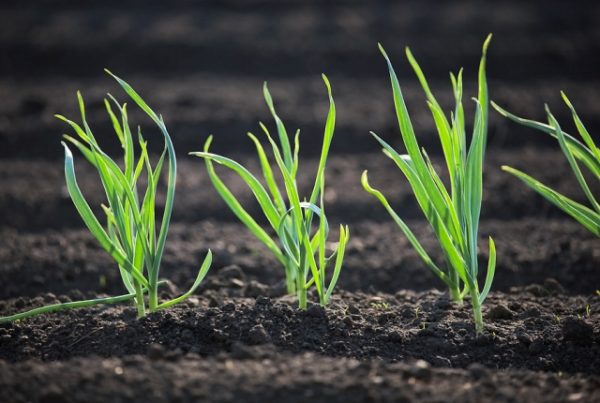
When the first shoots appear, onions should be fed. As a rule, complex mineral components, cow dung are used for this.
Regular irrigation is one of the main growing conditions. In the first two months, this procedure should be carried out in moderate doses, the land on the beds at the same time - loosened.
Breeding methods
This is best done with sevke. Before sowing, the material is sorted, dried, diseased and rotten onions are removed. Enumerated material is divided into three groups, by fractions.
Set aside for planting sevok dried for several days, then warm up. It should also before planting soak sevok in warm water with the addition of manganese,to protect planting material from diseases. After that, sevok is washed and can be considered prepared for planting.
Diseases and pests
The main disease of onion is powdery mildew. The disease can be identified by the characteristic gray tint on the affected foliage. Fortunately, our onion variety is excellent against such a disease.
Another dangerous manifestation is neck rot. Infection with it occurs during the ripening of the crop, the disease finally manifests itself during storage.
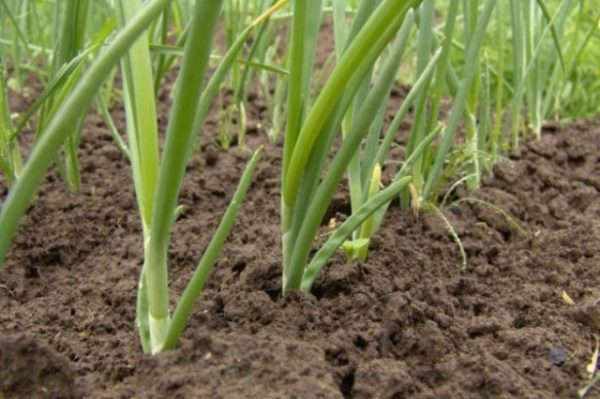
Among the harmful parasites that can infect onions, we can distinguish the nematode and the onion fly.
In order to avoid such troubles as much as possible, onions should be planted early, spraying it using Diazon or Borey preparations.
Harvesting and storage
Ripe onions can begin to clean from mid-August. The turnips are dug out, dried under a canopy for a couple of days, until the scales turn yellow and the necks dry out.
Onions are moved, trimmed foliage and roots. Moved crop laid in the repository.
The bamberger variety is considered unpretentious in cultivation.If the planting material was prepared with high quality, the soil composition is suitable for acidity, proper care is organized - the harvest is provided for you.
